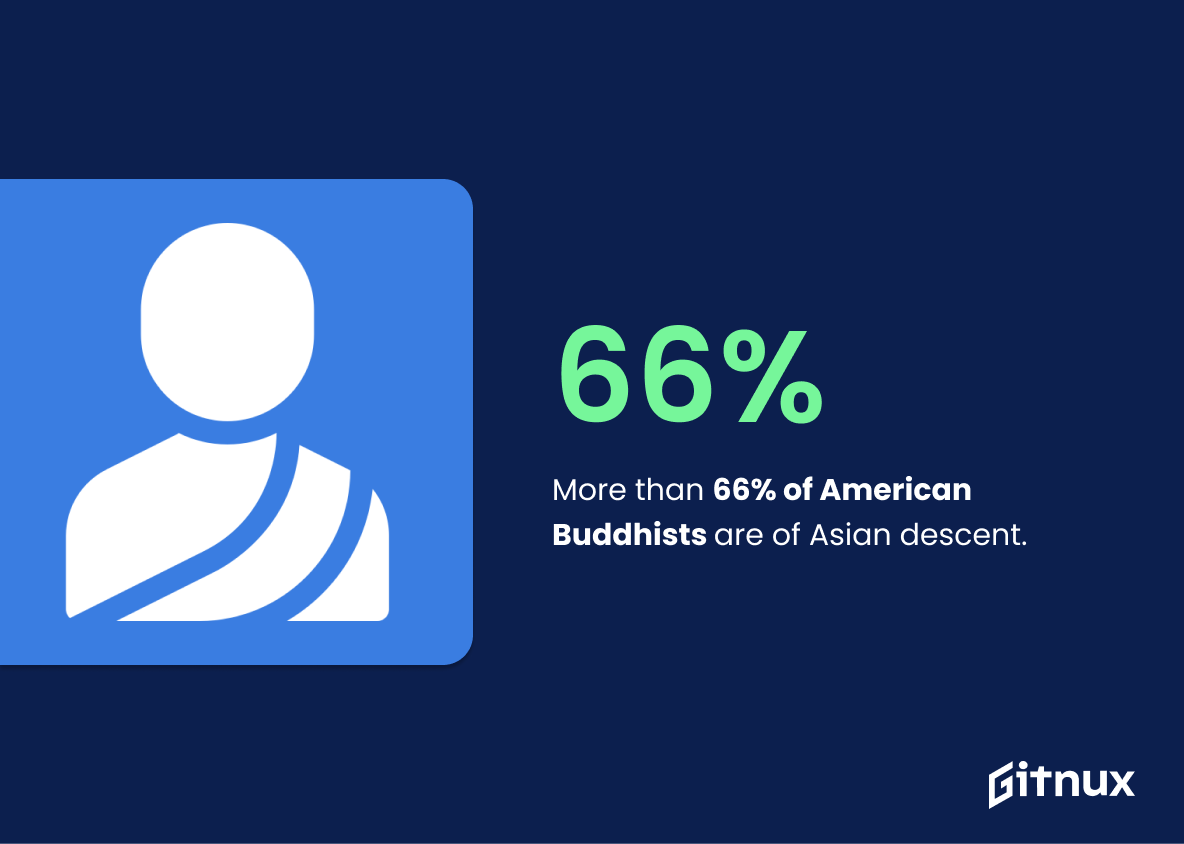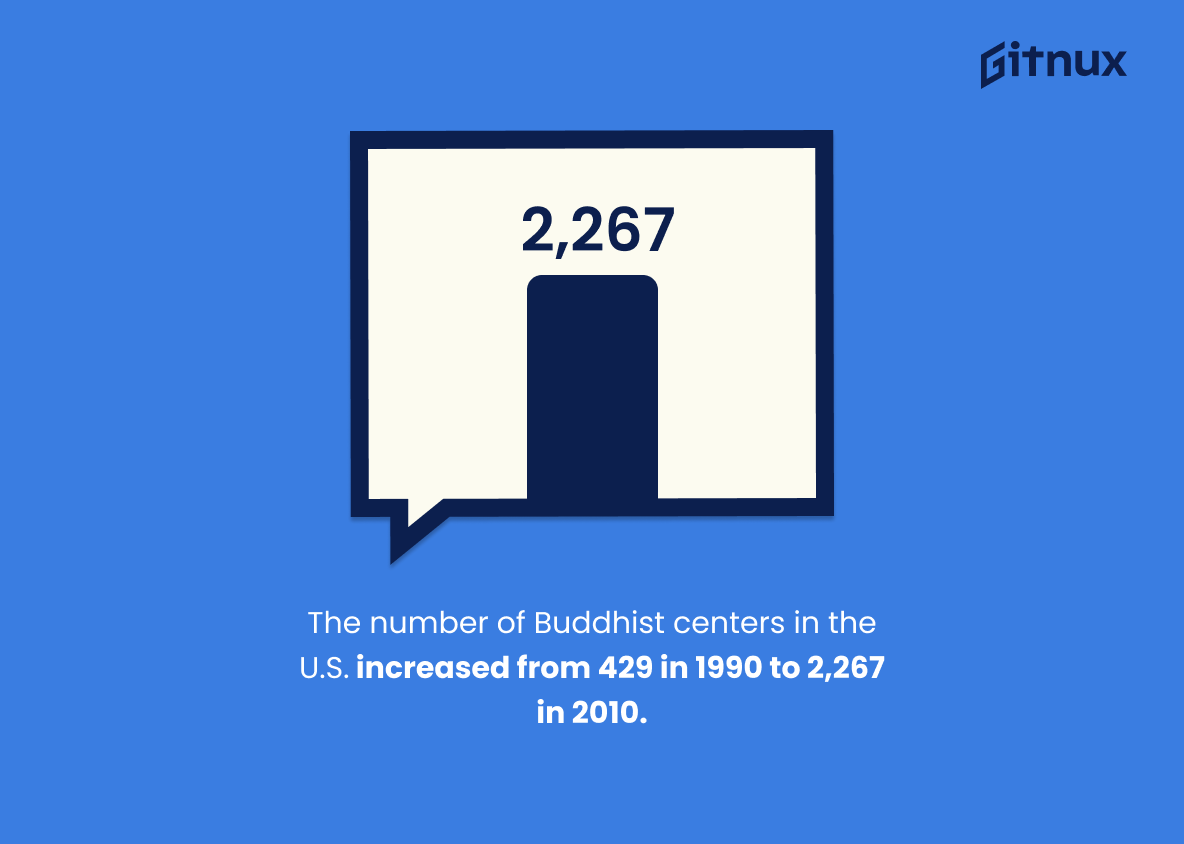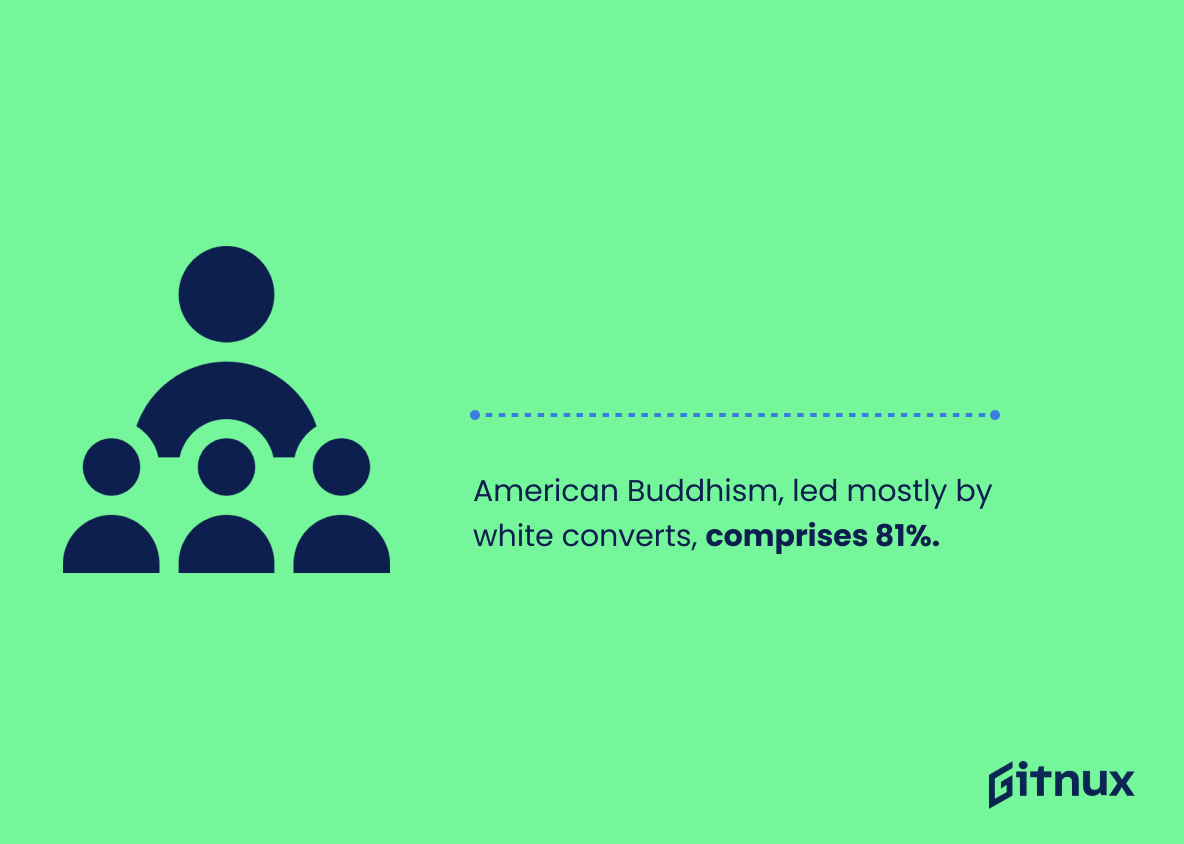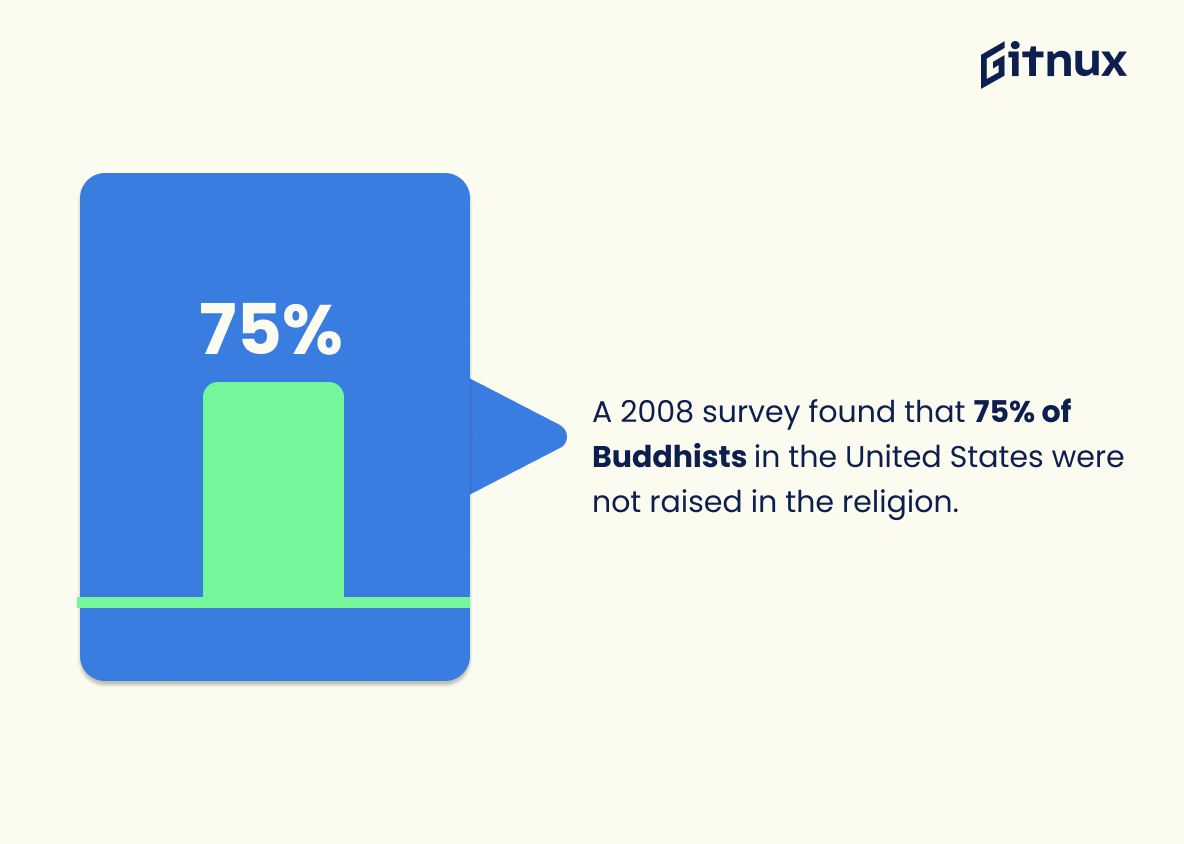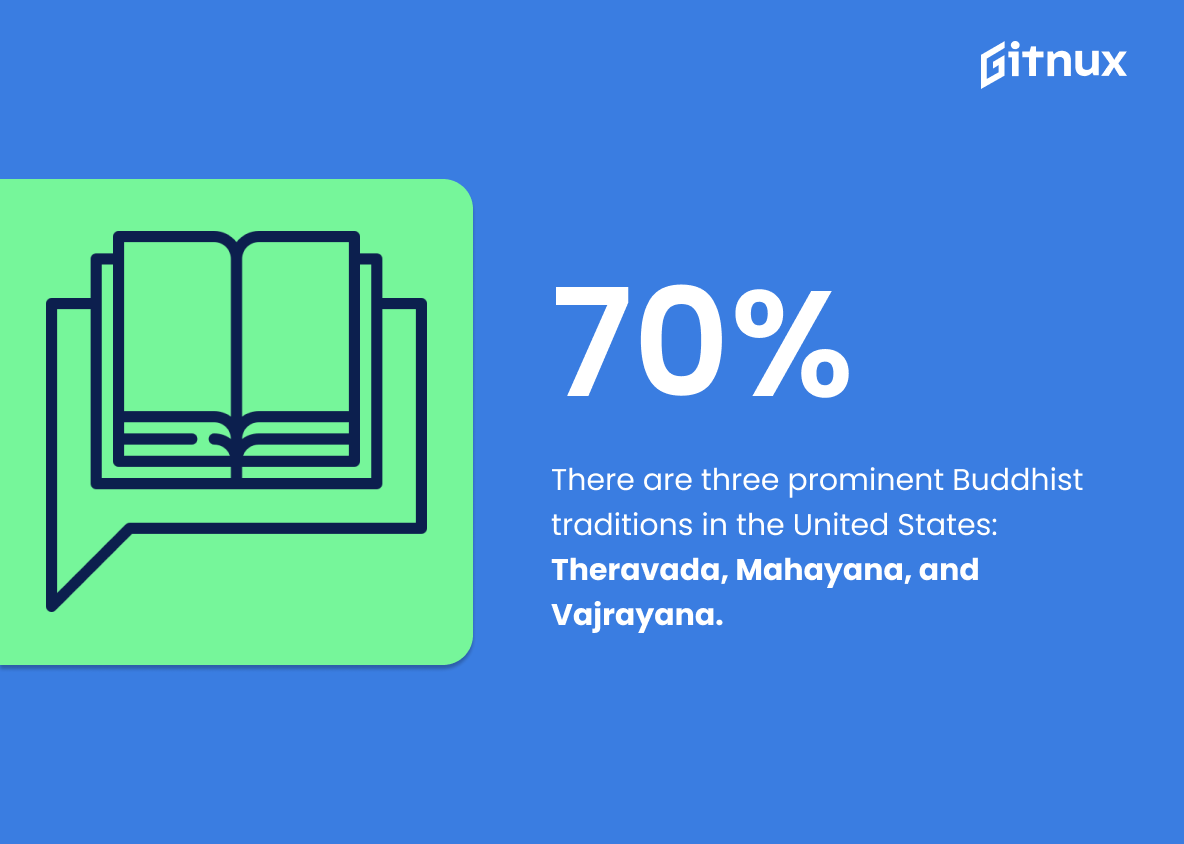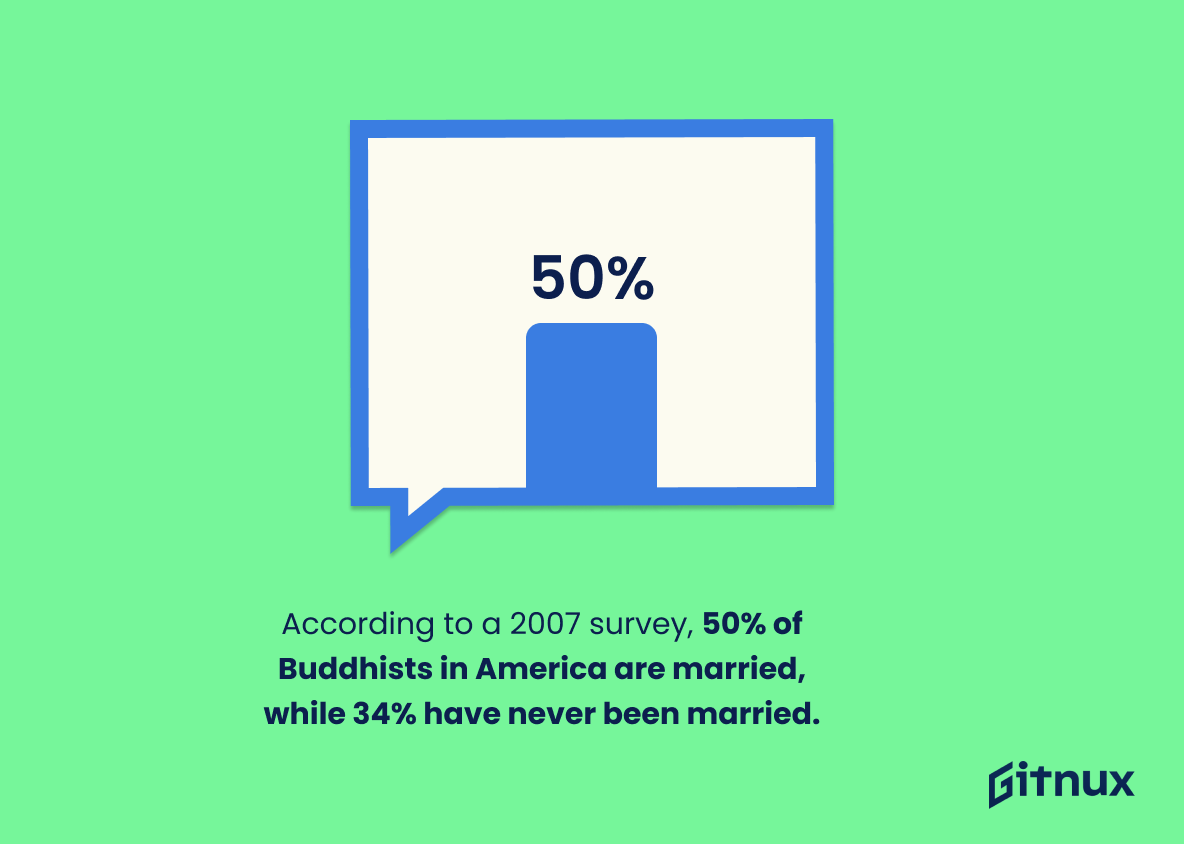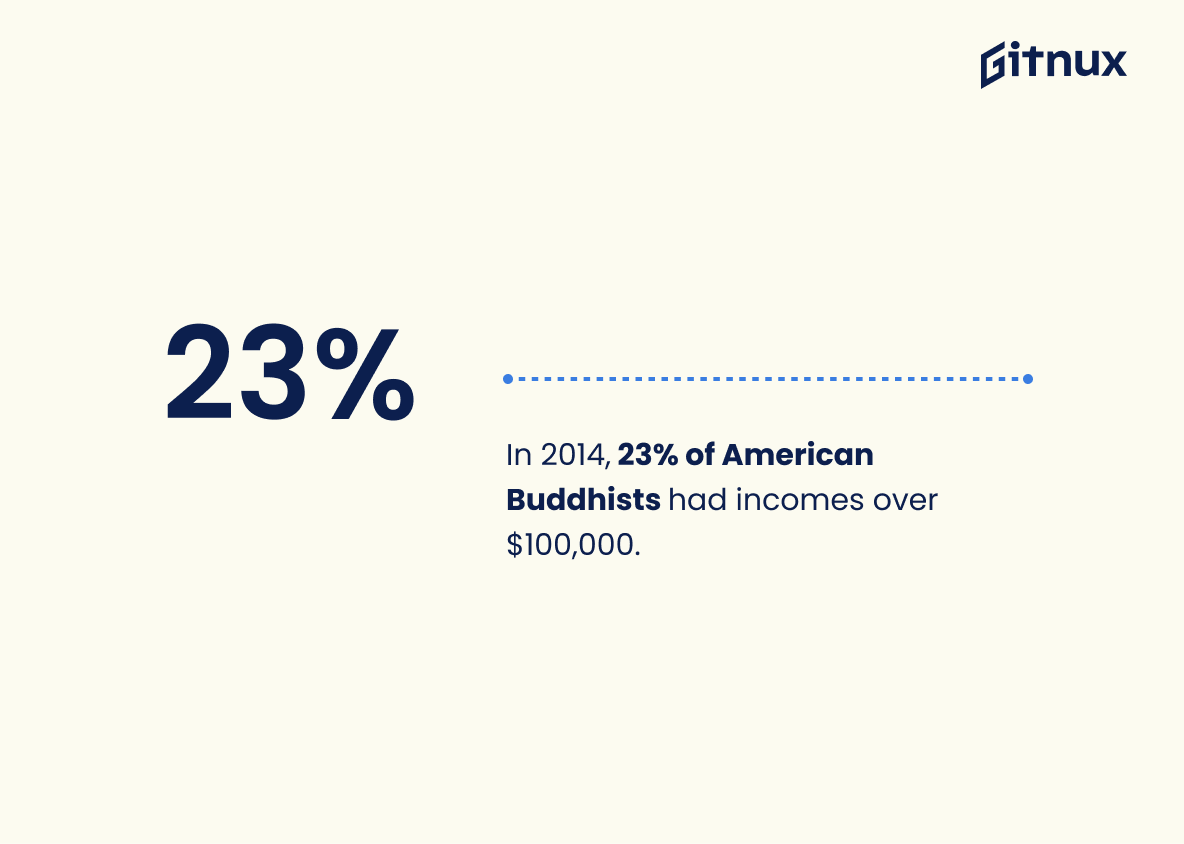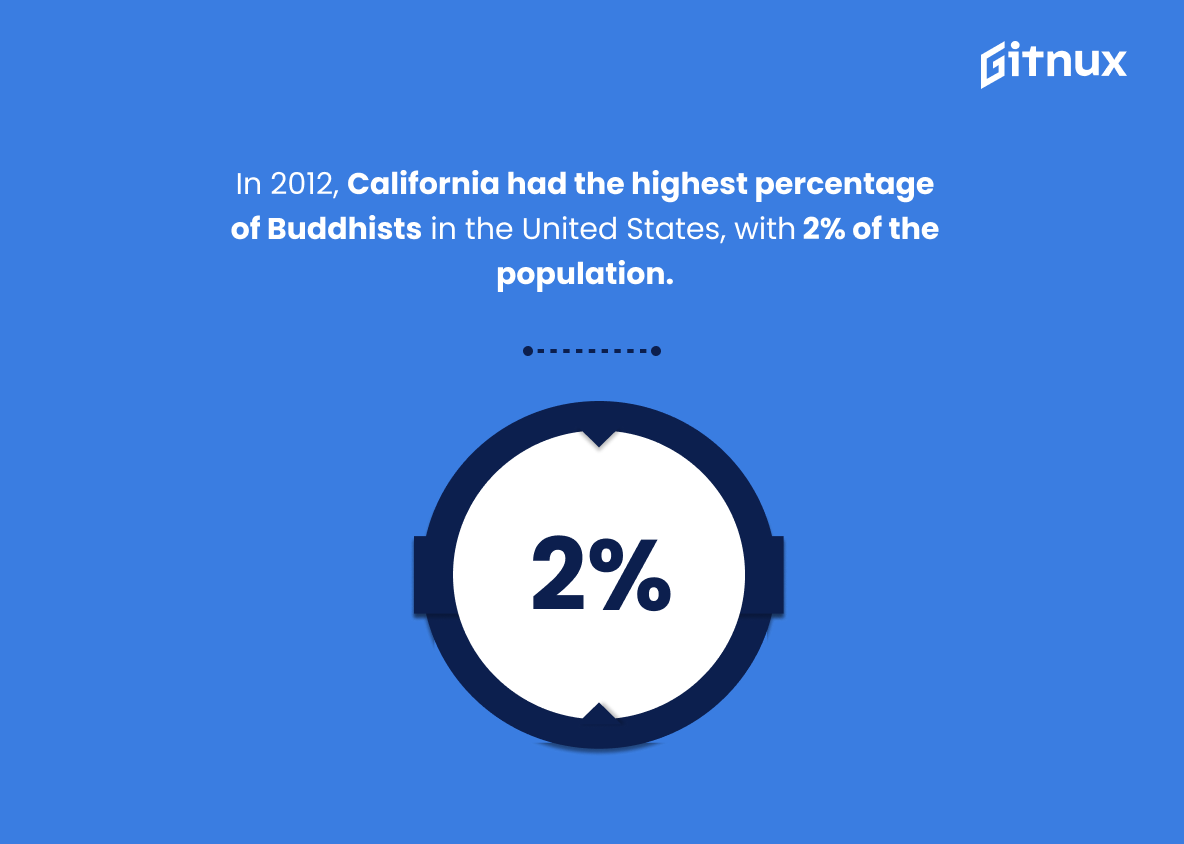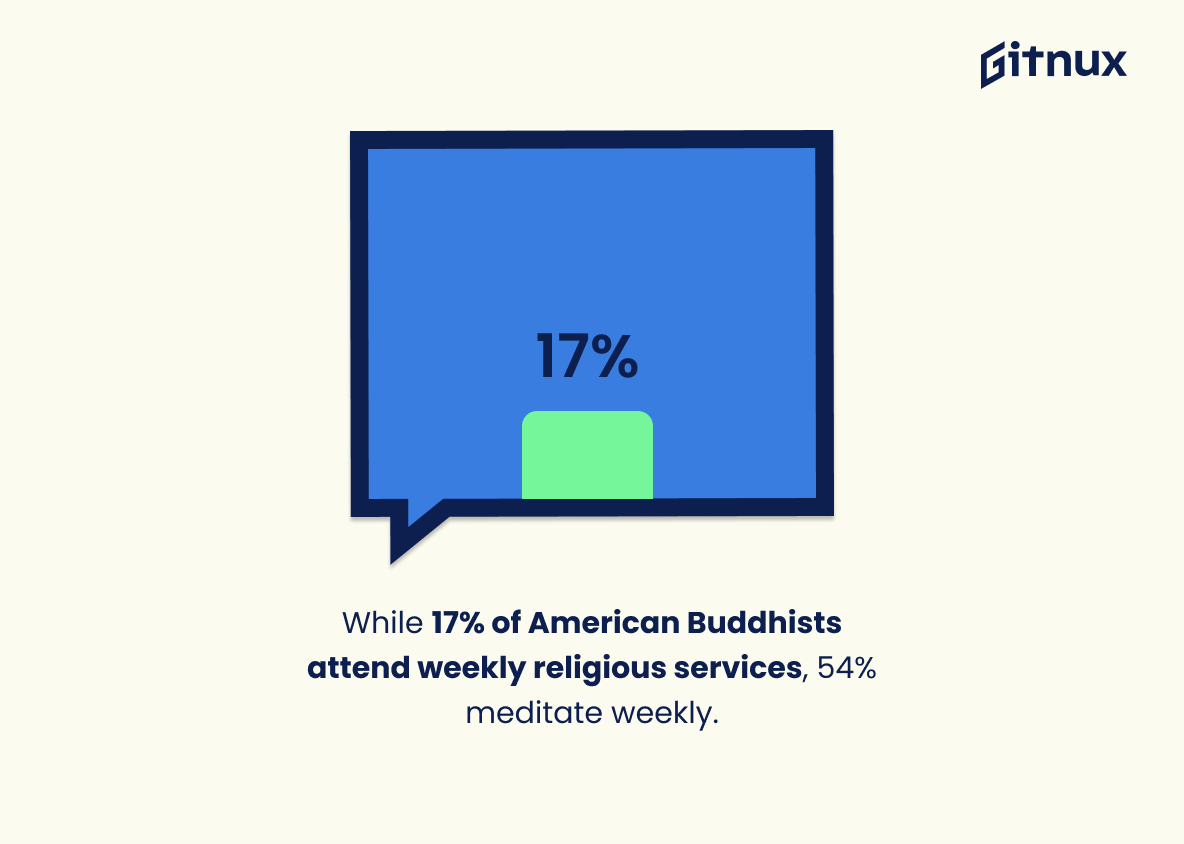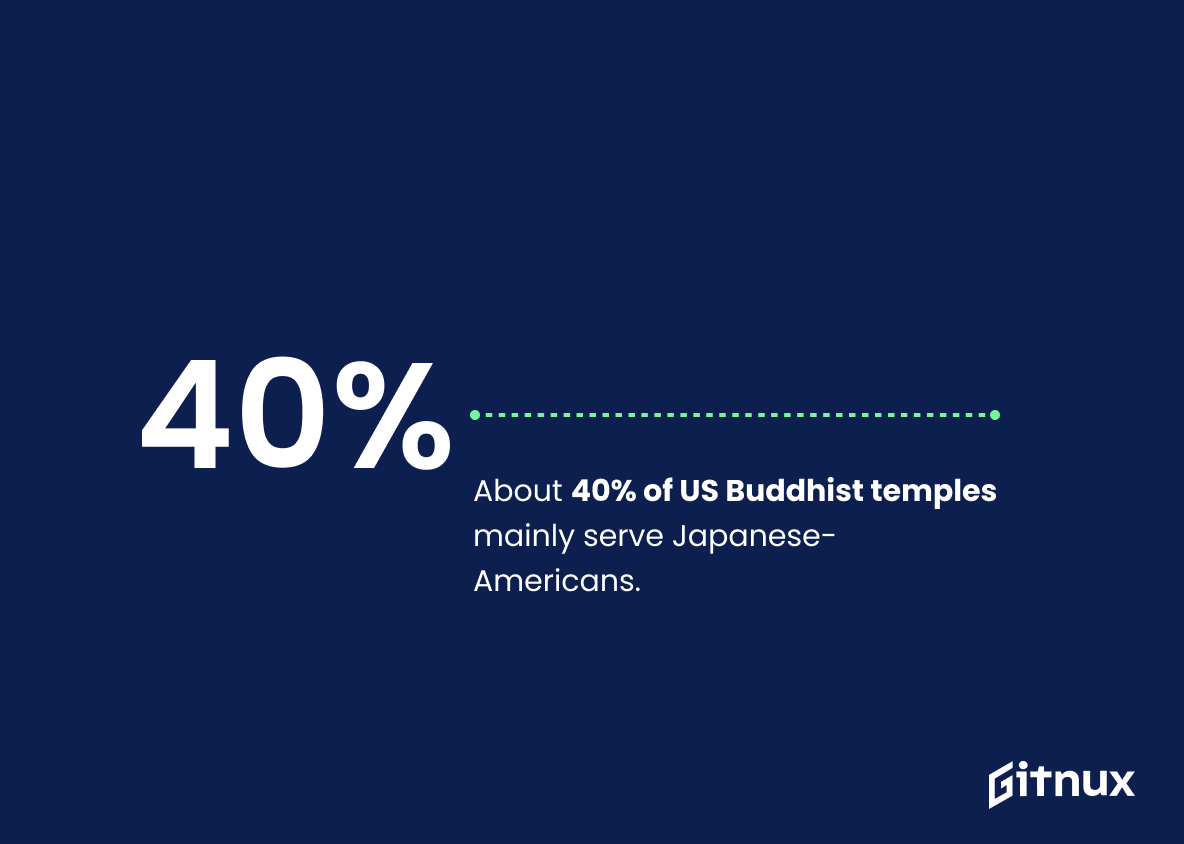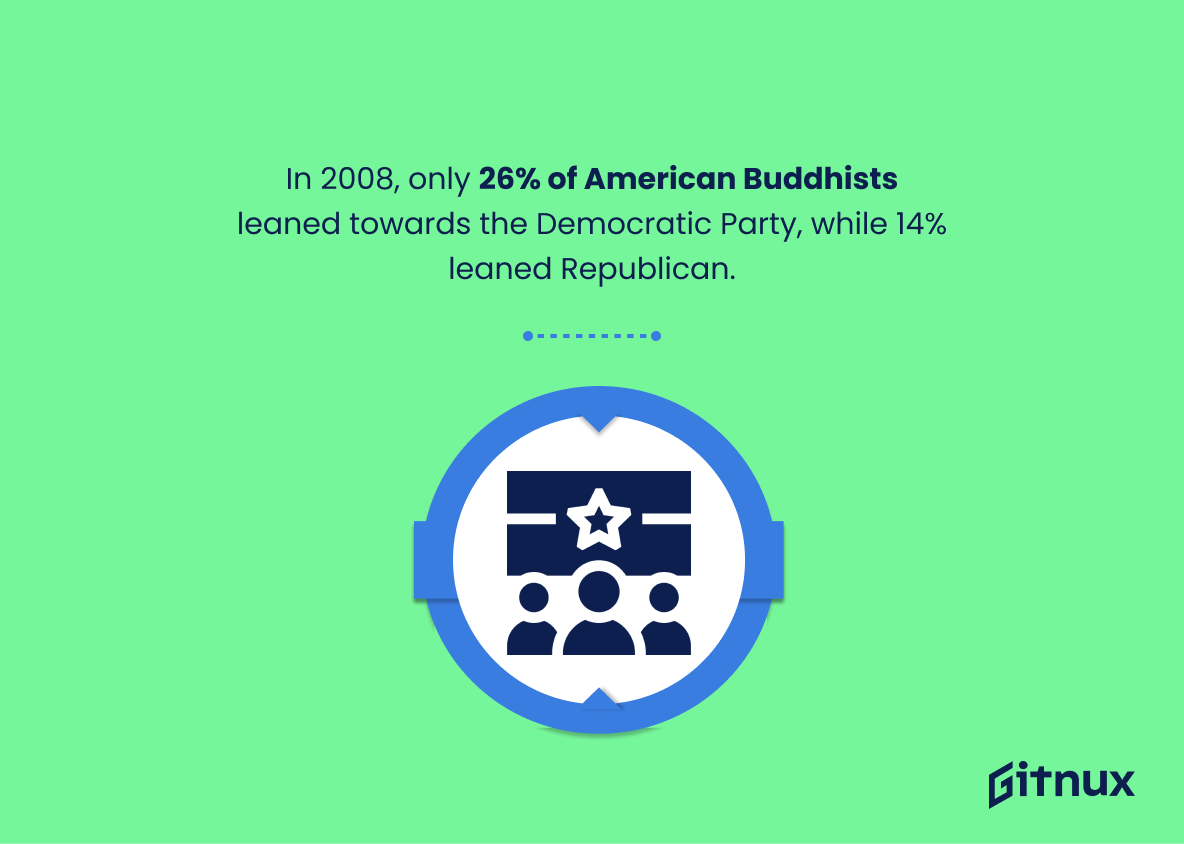Buddhism has been a part of American culture for centuries, and its presence in the United States continues to grow. According to recent statistics, as of 2022 approximately 1.2% of the U.S population identifies as Buddhist – an increase from around 100,000 in 1967 to an estimated 3-4 million today. More than 66% of American Buddhists are Asian descent while 81% self-identify as white converts; 75% were not raised in Buddhism but have since adopted it into their lives.
The number of Buddhist centers across America has also grown significantly over time – increasing from 429 in 1990 to 2267 by 2010 – with 40 percent serving predominantly Japanese-American populations and more than 90 percent located within metropolitan areas.
A 2008 survey found that 55.9 % identify themselves “spiritual but not religious” while 61 % prioritize environmental protection over economic growth according to a 2016 study . Additionally, 50 % are married , 23 % report having household incomes above $100 000 , 27 % hold graduate degrees (higher than 11%) national average) and 14 % practice another religion such as Christianity alongside Buddhism . In 2012 California had the highest percentage at 2%. Finally 26%, lean towards Democratic Party whereas only 14%, leaned Republican according Pew Forum’s 2008 survey on Social & Political Views among US Buddhists.
These facts provide insight into how Buddhism is practiced throughout America today: who practices it most often, where they live or congregate together and what values they share collectively amongst each other regardless if one was born into this faith or converted later on life journey .
This statistic is a powerful indicator of the growing presence of Buddhism in the United States. It shows that despite the country’s predominantly Christian population, Buddhism is making inroads and becoming an increasingly accepted religion in the US. This statistic is important to consider when discussing the current state of Buddhism in America, as it provides a snapshot of the current level of acceptance and prevalence of the religion.
The number of Buddhists in the United States grew from around 100,000 in 1967 to an estimated 3-4 million in 2022.
This statistic is a testament to the growing popularity of Buddhism in the United States. It shows that more and more people are turning to Buddhism as a way of life, and that the religion is becoming increasingly accepted in American society. This statistic is an important indicator of the progress Buddhism has made in the United States, and it is an important piece of information for anyone interested in the history and current state of Buddhism in America.
Buddhism In America Statistics Overview
More than 66% of American Buddhists are of Asian descent.
This statistic is a powerful reminder of the cultural roots of Buddhism in America. It highlights the fact that Buddhism is not just a religion practiced by Americans, but a religion that has been brought to the United States by immigrants from Asia. This statistic is a testament to the diversity of Buddhism in America and the importance of understanding the cultural context of the religion.
The number of Buddhist centers in the U.S. increased from 429 in 1990 to 2,267 in 2010.
This statistic is a testament to the growing popularity of Buddhism in America. It shows that the number of Buddhist centers in the U.S. has more than quadrupled in the past two decades, indicating that more and more people are turning to Buddhism for spiritual guidance and support. This is an important statistic to consider when discussing the prevalence of Buddhism in America, and it provides a valuable insight into the changing religious landscape of the country.
American Buddhism has largely been led by Western converts, with 81% of convert Buddhists self-identifying as white.
This statistic is significant in understanding the demographics of American Buddhism, as it highlights the fact that the majority of convert Buddhists in the United States are white. This is important to consider when discussing the history and current state of Buddhism in America, as it reveals the influence of white converts on the development of the religion in the country.
A 2008 survey found that 75% of Buddhists in the United States were not raised in the religion.
This statistic is significant in understanding the current state of Buddhism in America. It shows that the majority of Buddhists in the United States are converts, rather than those who were raised in the religion. This indicates that Buddhism is growing in popularity in the United States, and that more and more people are turning to Buddhism as a spiritual practice. This statistic is important to consider when discussing the spread of Buddhism in America, as it shows that the religion is gaining traction and becoming more widely accepted.
55.9% of American Buddhists identify as ‘spiritual but not religious.’
This statistic is a telling indication of the changing landscape of American Buddhism. It suggests that many Buddhists in the United States are embracing a more individualized approach to their faith, one that is more focused on personal spiritual growth than on traditional religious practices. This shift in attitude is reflective of the broader trend of Americans seeking out more personalized forms of spirituality, and it is an important factor to consider when discussing the state of Buddhism in America.
There are three prominent Buddhist traditions in the United States: Theravada, Mahayana, and Vajrayana.
This statistic is important in understanding the prevalence of Buddhism in the United States. It provides insight into the diversity of Buddhist traditions present in the country, and how they have adapted to the American context. It also serves as a reminder of the long history of Buddhism in the United States, and how it has evolved over time. By understanding the different Buddhist traditions in the United States, we can gain a better understanding of the current state of Buddhism in America.
According to a 2007 survey, 50% of Buddhists in America are married, while 34% have never been married.
This statistic is significant in understanding the prevalence of marriage among Buddhists in America. It provides insight into the lifestyle choices of those who practice Buddhism in the United States, and can be used to compare the marriage rates of Buddhists to other religious groups. Additionally, it can be used to explore the differences between married and unmarried Buddhists in terms of their beliefs and practices.
In a 2014 study, 23% of Americans identifying as Buddhists reported having a household income of $100,000 or more.
This statistic is significant in understanding the economic status of American Buddhists. It provides insight into the financial stability of those who identify as Buddhist, and can be used to compare the economic standing of Buddhists to other religious groups in the United States. Additionally, this statistic can be used to analyze the impact of Buddhism on the economic well-being of its adherents.
Almost one-in-four American Buddhists (27%) have a graduate degree, which is higher than the national average of 11%.
This statistic is a testament to the educational attainment of American Buddhists, demonstrating that they are more likely to have a graduate degree than the national average. This speaks to the dedication and commitment of American Buddhists to their faith and to their education, and serves as an example of the positive impact Buddhism has had on the lives of its adherents in the United States.
In 2012, California had the highest percentage of Buddhists in the United States, with 2% of the population.
This statistic is a powerful indicator of the growing presence of Buddhism in the United States, particularly in California. It shows that Buddhism is becoming increasingly popular in the US, and that it is gaining traction in the most populous state in the country. This statistic is a testament to the increasing acceptance of Buddhism in the US, and it is an important piece of information for anyone interested in the spread of Buddhism in America.
60% of Buddhists in the United States believe that many religions can lead to eternal life.
This statistic is significant in the context of a blog post about Buddhism in America Statistics because it demonstrates the level of acceptance and openness that Buddhists in the United States have towards other religions. It shows that Buddhists in the United States are open to the idea that many religions can lead to eternal life, which is a testament to the diversity and inclusivity of the Buddhist community in the United States.
While 17% of American Buddhists report attending religious services weekly or more, 54% report meditating on a weekly basis.
This statistic is a powerful illustration of the way American Buddhists practice their faith. It shows that while they may not be attending religious services as often as other religious groups, they are still engaging in spiritual practices such as meditation on a regular basis. This highlights the importance of meditation in the Buddhist faith and how it is an integral part of the American Buddhist experience.
Approximately 40% of the Buddhist temples in the United States serve a predominantly Japanese-American population.
This statistic is significant in understanding the spread of Buddhism in America, as it highlights the fact that a large portion of Buddhist temples in the United States are catering to a specific demographic. This indicates that Buddhism is not only being practiced by a diverse range of people, but that it is also being embraced by a particular ethnic group. This is an important insight into the growth of Buddhism in America, and can help to inform further research into the religion’s spread and influence.
More than 90% of Buddhist congregations in the United States are located in metropolitan areas.
This statistic is a telling indication of the prevalence of Buddhism in America, particularly in urban areas. It speaks to the fact that Buddhism is a growing religion in the United States, and that it is becoming increasingly popular in metropolitan areas. This statistic is important to consider when discussing the spread of Buddhism in America, as it provides insight into the areas where Buddhism is most popular and where it is likely to continue to grow.
In 2008, only 26% of American Buddhists leaned towards the Democratic Party, while 14% leaned Republican.
This statistic is significant in understanding the political leanings of American Buddhists. It provides insight into the political preferences of this particular religious group, which can be used to inform discussions about the role of Buddhism in American politics. Additionally, this statistic can be used to compare the political leanings of American Buddhists to other religious groups in the United States, providing a more comprehensive picture of the religious landscape in America.
Approximately 14% of U.S. Buddhists also practice another religion, such as Christianity.
This statistic is significant in understanding the religious landscape of the United States. It shows that many Americans are open to exploring different faiths and that Buddhism is becoming increasingly popular in the country. This could be an indication of a growing trend of religious pluralism in the United States, which could have implications for the future of religious practice in the country. Additionally, this statistic could be used to inform outreach efforts by Buddhist organizations, as it shows that there is a large potential audience for their teachings.
61% of American Buddhists believe that environmental protection should be prioritized over economic growth.
This statistic is significant in the context of Buddhism in America because it demonstrates the commitment of American Buddhists to protecting the environment. It shows that the majority of American Buddhists prioritize the preservation of the environment over economic growth, which is a core tenet of Buddhist teachings. This statistic is a testament to the impact that Buddhism has had on the values of American Buddhists and the importance of environmental protection in their lives.
Conclusion
The statistics presented in this blog post demonstrate the growth and diversity of Buddhism in America. From 1967 to 2022, the number of Buddhists has grown from around 100,000 to an estimated 3-4 million people. This population is largely composed of Asian Americans (66%) and Western converts (81%), with many identifying as “spiritual but not religious” (55.9%). The majority are married or have never been married, while 23% report having a household income over $100,000 and 27% hold graduate degrees – both higher than national averages.
Buddhism is also geographically diverse; California has the highest percentage at 2%, followed by metropolitan areas where more than 90% of Buddhist congregations can be found. Additionally, there are three prominent traditions practiced: Theravada, Mahayana and Vajrayana Buddhism – each offering unique spiritual practices such as meditation which 54% reported doing on a weekly basis compared to 17% who attend services regularly. Finally 61 % prioritize environmental protection over economic growth demonstrating their commitment towards social justice issues that affect us all today .
References
0. – https://www.buddhistdoor.net
1. – https://www.worldhistory.org
2. – https://www.pewforum.org
3. – https://www.pluralism.org
4. – https://www.pewresearch.org
